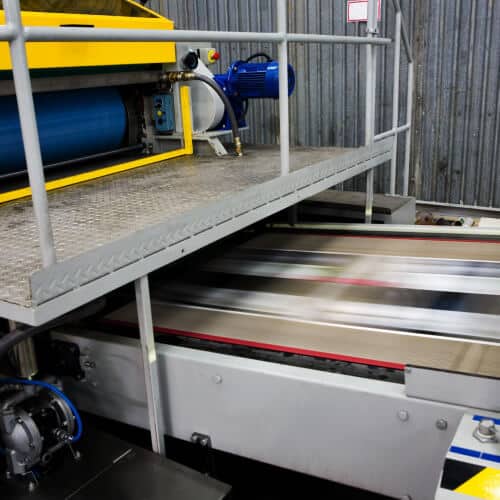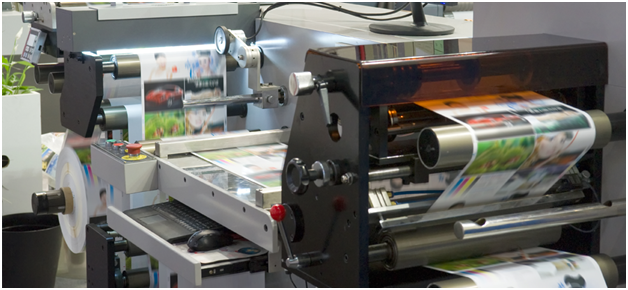The Essential Guide to Comprehending Litho Printing and Its Applications
Litho printing stands as a substantial approach in the printing market, rooted in the concepts of oil and water repulsion. This method not only provides top notch photos however also accommodates various commercial requirements. Its applications vary from advertising and marketing products to product packaging, showcasing its adaptability. As the sector adapts to new modern technologies, the development of litho printing increases questions about its future and relevance in a digital landscape. What lies ahead for this enduring method?

What Is Litho Printing?
Litho printing, a commonly used printing method, depends on the concept of oil and water repulsion. This approach utilizes a flat printing surface area, typically a metal plate, which is treated to guarantee that the image locations are receptive to oil-based inks while the non-image locations repel them. The procedure begins with the production of a picture on the plate, frequently with drawing or photographic methods. When the image is prepared, home plate is wetted with water, complied with by the application of ink. The ink sticks just to the image areas, enabling specific reproduction of graphics and text. Litho printing is favored for its capacity to generate top notch prints with great information and dynamic shades. It is commonly utilized in industrial applications, including papers, publications, and product packaging, showcasing its convenience and efficiency in meeting the needs of contemporary printing.
The History of Lithography
Lithography is a modern-day printing staple, its origins trace back to the late 18th century when German playwright Alois Senefelder designed the strategy in 1796. Developed as an approach for recreating texts and images, lithography utilized a level stone surface area to create prints via a chemical process. Senefelder's innovation permitted higher flexibility and creative expression contrasted to previous printing methods.By the 19th century, lithography gained widespread acceptance, becoming a preferred option among artists and authors. It made it possible for the automation of images, maps, and posters, especially impacting the printing market. The method even more advanced with the intro of lithographic presses, improving performance and quality.As the industrial transformation advanced, lithography adapted to satisfy the demands of industrial printing, leading the way for modern applications. Today, it continues to be an essential technique in numerous fields, including posting, packaging, and art recreation.
Exactly How Litho Printing Works
A key feature of litho printing is its dependence on the concept of oil and water repulsion - litho printing. In this procedure, pictures are moved from a level surface area, generally a metal or polymer plate, to paper. The plate is treated to make sure that the areas meant for printing bring in ink, while the non-image locations repel it due to their fondness for water. The printing starts by dampening the plate with water, which sticks to the non-image locations. Consequently, an oil-based ink is applied, sticking only to the intended picture areas.When the plate enters contact with the substratum, the ink is transferred, developing a print. The litho printing process is qualified of generating top notch images with great information. It is commonly utilized for automation because of its performance and consistency, making it a favored approach for business printing applications
Advantages of Litho Printing
One noteworthy advantage of litho printing is its capability to create high-grade pictures consistently, making it an ideal option for business tasks. This printing approach utilizes a level printing plate, ensuring even ink distribution and sharp details. Litho printing is additionally renowned for its shade accuracy, allowing vibrant and true-to-life recreations, which is necessary for branding materials.Moreover, it sustains a wide array of substrates, consisting of paper, cardboard, and even particular plastics, enhancing its convenience. The process is economical for large runs, as economic situations of scale lower per-unit costs. Additionally, litho printing has a fast turn-around time, enabling efficient manufacturing schedules.Its longevity likewise means that published materials stand up to fading, guaranteeing that the final item keeps its visual allure gradually. Generally, these benefits make litho printing a favored selection throughout different markets, adding to its long-lasting popularity.
Applications of Litho Printing in Business
As businesses progressively look for trustworthy and high-quality printing remedies, litho printing becomes a principal in numerous applications. This strategy is specifically favored for generating advertising products such as sales brochures, flyers, and catalogs, many thanks to its ability to provide vivid shades and sharp pictures. Furthermore, litho printing is regularly used for product packaging remedies, permitting companies to create eye-catching labels and boxes that enhance product appeal.In the market of corporate identity, litho printing contributes in producing expert stationery, calling card, and promotional product, which help strengthen brand recognition. It is extensively made use of in the posting industry for published products such as publications and magazines, where constant top quality is critical. Overall, litho printing's convenience and performance make it an important device for organizations aiming to interact successfully and develop a strong market presence.
Artistic Uses of Litho Printing
Litho printing works as a functional tool in the domain name of printmaking, offering artists an one-of-a-kind technique to reveal their imagination. This technique allows for a broad range of creative applications, from conventional prints to contemporary analyses. By checking out the nuances of litho printing, artists can harness its distinct high qualities to improve their job.

Printmaking Strategies Overview
The creativity of printmaking incorporates a diverse series of strategies, with litho printing standing out for its one-of-a-kind technique to photo production. This technique relies upon the concept of oil and water repulsion, allowing artists to draw straight onto a sedimentary rock or steel plate with a greasy medium. As soon as prepared, home plate is dampened and tattooed, moving the photo onto paper through stress. Litho printing is commemorated for its ability to produce great information and rich tonal variations, making it a favored selection amongst artists. In addition, the procedure is functional, suiting both conventional methods and modern adjustments. This versatility allows litho printing to bridge various artistic styles, enhancing the printmaking landscape with its distinctive characteristics and capacities.
Special Artistic Applications
Exploring the special imaginative applications of litho printing reveals its exceptional flexibility in various innovative areas. Musicians utilize litho printing to produce detailed designs and appearances, enabling meaningful and comprehensive jobs. The process facilitates the recreation of dazzling shades, making it perfect for pictures and great art prints. Numerous contemporary musicians accept lithography for its ability official statement to combine typical techniques with modern principles, resulting in ingenious art work. Furthermore, litho printing is commonly utilized in the manufacturing of limited version prints, improving visit site their worth and appeal. The tactile top quality of litho prints adds a distinct dimension, attracting collectors and art fanatics alike. Overall, litho printing stays a considerable tool for imaginative expression, connecting classic approaches with contemporary creative thinking.
The Future of Litho Printing in a Digital World
As the printing sector progresses, litho printing deals with the difficulty of incorporating digital innovations to continue to be pertinent. Techniques concentrated on digital integration, along with trends in sustainability and development, will certainly shape its future - litho printing. Understanding these dynamics is vital for market stakeholders wanting to adapt to a swiftly altering landscape
Digital Integration Approaches
A growing number of litho printing companies are accepting digital assimilation techniques to remain competitive in a significantly digital landscape. By including electronic workflows, these firms can enhance processes and improve effectiveness. This integration enables real-time data monitoring and enhanced communication between departments, reducing turn-around times significantly. Additionally, digital devices make it possible for much better modification and personalization of printed products, satisfying specific client demands. Business are likewise taking on crossbreed printing options that incorporate standard litho strategies with electronic modern technologies, using convenience in production. Additionally, leveraging information analytics helps in recognizing market trends and customer preferences, permitting companies to make educated decisions. Overall, digital combination is coming to be crucial for litho printing business intending to innovate and respond to developing market requirements.
Sustainability and Advancement Patterns

Regularly Asked Questions
What Products Are Typically Used in Litho Printing?
The materials frequently made use of in litho printing consist of aluminum plates, ink, water, and paper. Each part plays an important function in the printing procedure, ensuring high-grade image recreation and reliable transfer of ink onto the substratum.
Exactly How Does Litho Printing Compare to Digital Printing?
Litho printing supplies premium color uniformity and top quality for huge runs, while digital printing masters short runs and personalization. Each method has unique advantages, satisfying various demands based upon manufacturing scale and cost-efficiency.
What Is the Normal Turn-around Time for Litho Printing Projects?
The regular turn-around time for litho printing tasks differs, normally ranging from a couple of days to numerous weeks. Variables influencing this duration consist of job complexity, amount, and needed finishing procedures, influencing total production schedules.
Can Litho Printing Accommodate Personalized Sizes and Formats?
Litho printing can certainly accommodate custom sizes and styles, permitting for versatility in style. This versatility allows customers to accomplish distinct print outcomes customized to their specific demands, boosting the general efficiency of their projects.
What Are the Environmental Impacts of Litho Printing?
The environmental effects of litho printing include resource usage, chemical use, and waste generation. Innovations in lasting methods and green products are slowly reducing these adverse effects, promoting a more ecologically responsible method to printing.